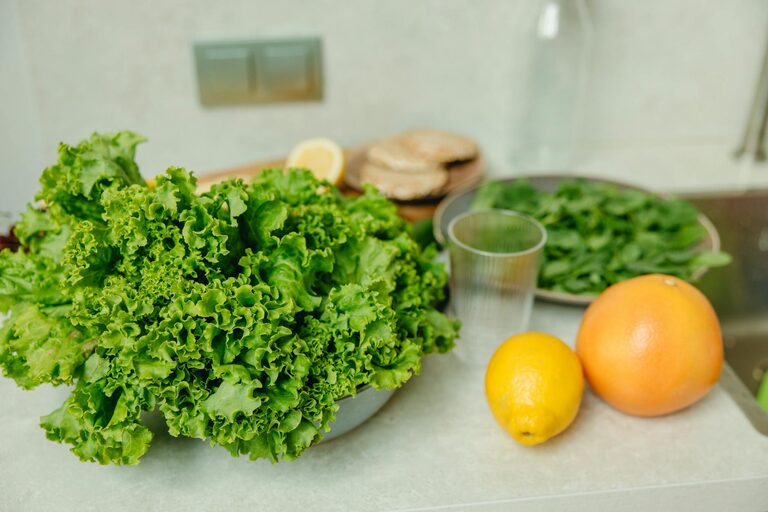Eating balanced meals is essential for maintaining good health and energy. However, for many people, planning these meals can feel overwhelming. Between busy schedules, dietary preferences, and endless food choices, it’s easy to get stressed out. The good news is, with a little organization and simple strategies, you can plan balanced meals without the hassle. In this guide, we will walk you through practical steps to make meal planning enjoyable and stress-free.
What Is a Balanced Meal?
Before diving into planning, it’s helpful to understand what a balanced meal looks like. A balanced meal includes a variety of food groups, providing essential nutrients your body needs.
Key Components of a Balanced Meal:
– Proteins: Helps build and repair tissues (e.g., chicken, beans, tofu, fish)
– Carbohydrates: Primary energy source (e.g., whole grains, potatoes, fruits)
– Healthy Fats: Support brain and cell function (e.g., avocados, nuts, olive oil)
– Vegetables and Fruits: Provide vitamins, minerals, and fiber
– Hydration: Water or other low-sugar beverages
By combining these components, you ensure your meals nourish you well and keep you satisfied.
Step 1: Set Realistic Meal Planning Goals
Trying to overhaul your diet overnight is a recipe for frustration. Instead, start with achievable goals:
– Plan for a few days instead of the entire week
– Focus on one meal type at a time, such as dinners or lunches
– Include at least one vegetable or fruit in every meal
Setting realistic targets helps you build confidence and creates a sustainable habit.
Step 2: Create a Simple Meal Plan Template
Having a plan laid out removes guesswork and last-minute decisions. Here’s how to create one:
- **Choose Your Planning Period:** Decide if you want to plan meals for 3 days, 5 days, or a full week.
- **Divide Meals by Day and Time:** Breakfast, lunch, dinner, and snacks.
- **Leave Room for Flexibility:** Mark a couple of “free choice” meals meant for leftovers or spontaneous dining.
Using a notebook, printable template, or smartphone app can streamline this process.
Step 3: Build a Balanced Shopping List
Once your meal plan is ready, translate it into a grocery list. Tips for an efficient list:
– Group items by category (produce, dairy, pantry, etc.)
– Check your pantry for existing ingredients to avoid duplicates
– Choose versatile ingredients used in multiple recipes, such as rice, eggs, or frozen vegetables
A well-prepared shopping list saves time and reduces impulse buys.
Step 4: Prepare Meals Ahead of Time (Meal Prep)
If time is tight, prepping meals in advance can be a lifesaver.
– Batch-cook staples like grains, roasted vegetables, or proteins
– Portion meals into containers for grab-and-go options
– Freeze portions that won’t be eaten within a few days to avoid waste
Meal prepping can reduce daily cooking stress and help maintain healthy choices.
Step 5: Explore Easy Balanced Meal Ideas
You don’t need complicated recipes to enjoy balanced meals. Here are some simple examples:
Breakfast Ideas
– Greek yogurt with fresh fruit and a sprinkle of nuts
– Whole-grain toast topped with avocado and a boiled egg
– Oatmeal with berries, chia seeds, and a drizzle of honey
Lunch Ideas
– Salad with mixed greens, grilled chicken, quinoa, and vinaigrette
– Whole-wheat wrap with hummus, roasted vegetables, and feta cheese
– Lentil soup paired with a side of whole-grain bread
Dinner Ideas
– Baked salmon, steamed broccoli, and brown rice
– Stir-fried tofu with mixed vegetables and soba noodles
– Turkey chili loaded with beans and bell peppers
These meals are quick to prepare and meet nutritional needs.
Step 6: Stay Flexible and Kind to Yourself
Meal planning doesn’t have to be perfect. Here are ways to keep stress low:
– Allow room for cravings or dining out occasionally
– Swap ingredients if you’re out of something
– Learn from each week and adjust your plan accordingly
Remember, balanced eating is about overall patterns, not every single meal.
Additional Tips for Stress-Free Meal Planning
– Use leftovers creatively: Combine last night’s roasted veggies into a frittata or pasta
– Keep healthy snacks handy: Nuts, fruit, or yogurt can bridge hunger gaps without extra prep
– Involve family or housemates: Sharing responsibilities makes planning easier and more enjoyable
– Experiment gradually: Try one new recipe or ingredient weekly to keep meals exciting
Conclusion
Planning balanced meals doesn’t need to be a source of stress. With clear goals, simple tools, and a flexible mindset, you can create nutritious, tasty meals that fuel your body and fit your lifestyle. Start small, stay consistent, and enjoy the satisfaction that comes with healthy eating made easy. Happy meal planning!

